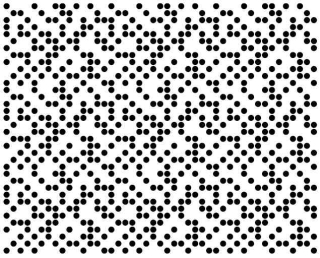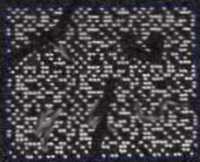|
Registry (continued) - Allocation of Identifiers
In this manner:
- All identifiers allocated to a client-system are serial sequential as shown in
Figure 3 opposite.
- The first identifier of the first allocation to a client-system is the identifier by
which that particular client-system is henceforth identified.
- Administration of the allocation of identifiers from the registry for all
client-systems is greatly simplified because one only needs to record, for any
client system, the first and the last identifier allocated to any particular
client-system.
Universality. This system of unique
item identification can co-exist with any other system of generic or individual
identification, such as GS1, manufacturer's parts numbers, transport tracking
numbers or wholesale product numbers. It points to a computer record
and from this record any amount of information about that entity may be
obtained.
Efficiency. Unlike other systems of unique item
identification, such as GS1, this system has
been found, in the field during trials, to require around 60% less labour than, say
GS1, to label or tag items for the purposes of identification.
This is because the tag or label does not have to be matched up to a specific
item. Instead, the item is tagged or labelled with any identifier and then, using
a hand-held reader, the identifier is associated with the entity when its displayed on
a list within the database.
|
Two Dimensional Bar Code

Figure 4. Example of a NU-ERA 2D Bar Code
Purpose of Novel Bar Code Symbology. The Bar Code
Symbology, displayed in Figure 4, was developed to:
- Be novel such that it could be patented. This would
allow the enforcement of a licence condition that the NU-ERA barcode may only be
used when representing identifiers drawn from the NuEra-ID unique identifier registry.
- Represent a 128 bit binary identifier of which 96 bits would be
the "payload". 96 bits of data provides an identifier range from 0 to
79,228,162,514,264,337,593,543,950,336. In other words, it would be
possible to issue from the NuEra-ID registry one million, billion unique identifiers per
annum for approximately 79,228,162,514,264 years (~79 thousand billion
years). Provided these identifiers were efficiently allocated, this range
provides for an inexhaustible supply of unique identifiers.
- Be highly resistant to dirt and damage. This
was achieved through large-scale redundancy. The redundant pattern also
facilitated the identification of a barcode in the field of view of an image
sensor by the image processing circuitry.
|
- Provide a barcode with a low probability of erroneous
read. This would be achieved through using a 32 bit error code.
- Consist only of dots. Being so it could be printed
or etched using inexpensive equipment. Having only dots is particularly suited to
engraving items with the barcode using a simplified laser etching
system.

Figure 5. Example of a Readable Damaged Tag
Figure 5 provides an example of the robustness of the NU-ERA Bar Code.
This robustness is achieved through the use of largescale redundancy, error
detection (to determine if one of the arrays actually yields a valid value) and
the processor "overlaying" arrays to determine the strongest summated signal
from any "dot" making up each of the overlapped arrays. Other systems
such as Reed-Solomon encoding could be used for this purpose and may indeed be
a more efficient use of dots but the redundancy also serves a another function
and that is to assist the image processor speedily find a barcode pattern in
the field of view of the image sensor.
|